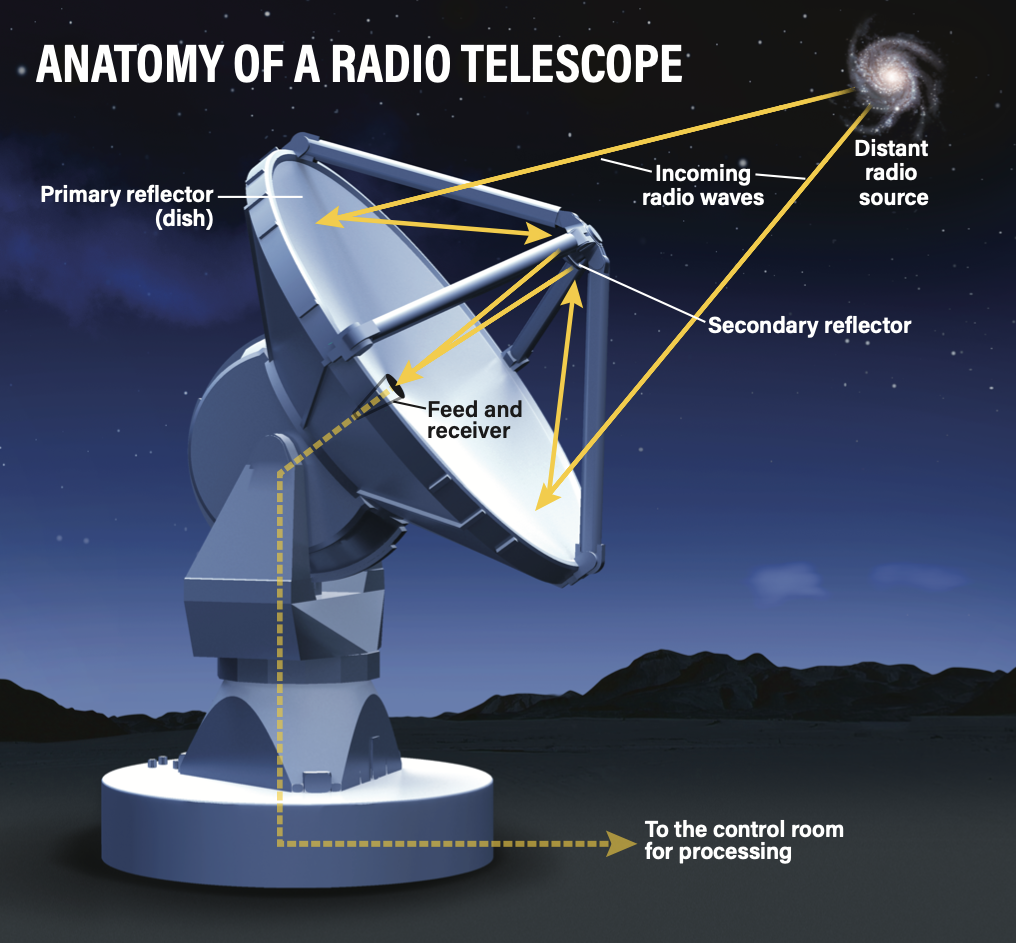
Key Takeaways:
How are images made with radio telescopes?
Steve Hepp
Montesano, Washington
Radio telescopes come in all shapes and sizes, depending mainly on the radio wavelengths they are designed to receive. The most familiar sort is a curved dish that reflects radio waves to a focal point, ranging from meter to submillimeter wavelengths. Usually, radio waves are reflected by a smaller secondary reflector back down to the center of the dish, where it is much more convenient to place feeds (which convert the radio waves to electrical signals) and receivers.
If there were only one feed at the exact focal point, the telescope would only be sensitive to radio waves from one small patch of sky, whose diameter (in degrees) is roughly 57.3 times the observing wavelength divided by the diameter of the dish. This would be like a single pixel in an optical image. Imaging an extended object or surveying large swaths of sky becomes excruciatingly time consuming, building up the image one pixel at a time.
Fortunately, there is a region around the precise focal point where radio waves are still in reasonably good focus. A second feed and receiver just off axis can observe a patch of sky adjacent to the first and you will have two pixels! Clever electronics and engineering reduce distortions from being off axis. That region is only big enough to accommodate half a dozen or so separate feeds and receivers, but that is still an enormous increase in speed and sensitivity.
Since about 1980, nearly all large radio dishes incorporate systems similar to the one described above. Crowding the feeds together places more beams on the sky, but these are difficult to build because the feeds interact with each other. These are called phased focal plane arrays. The 100-meter Green Bank Telescope in West Virginia has a seven-beam system for surveying interstellar ammonia at a wavelength of 1.3 centimeters. A 16-beam system operating at a 3-millimeter wavelength observes carbon monoxide and other molecules. Larger multi-beam systems are installed on arrays in Australia and the Netherlands.
John Wardle
Professor of Astrophysics, Brandeis University, Waltham, Massachusetts









